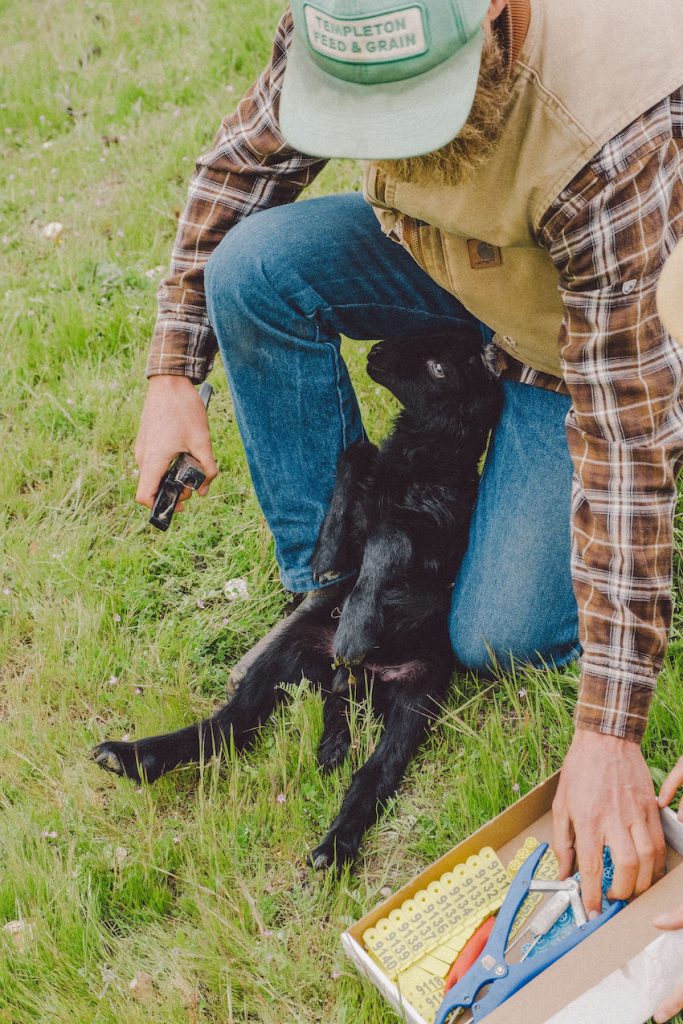
Standing Ground
A visual journey of the farms of the Central Coast.
Standing Ground, An Introduction
As a Central Coast freelance photographer I have been fortunate enough to create images since 2004, though within the last two years I’ve realized that I have been lacking an outlet in my art for personal projects. Standing Ground is a personal project of mine that stemmed from my interest in food photography and the curiosity of what goes on behind the scenes.
As a photographer I am intrigued by what happens before that final image. In food imagery, I ask the chef about the ingredients. Not the plate, not the styling, not the amount of time it takes to prepare…rather, I am curious as to where the meat comes from, or what the farming process is of that vegetable I see sliced neatly on the plate, or blended into a puree. Sure the food tastes amazing, but why? And how?
Here we are, in 2019, and I have finally started this project. Standing Ground is a collaboration between me (the photographer) and multiple individuals that not only farm or ranch, but in their heart-of-hearts believe that where our food comes from is ultimately more important than how it looks on a plate.
It is crucial for all of us to understand the food that we eat. Not only do I feel a responsibility to showcase these key foods, but I am equally as passionate on exploring how that food is grown and harvested. To learn about the land is just as important as the product itself. As a population, we don’t take the appropriate time to explore and discuss this. Due to the fast-moving world, the need for speed and efficiency has led to the over-processing of food, to the point where one can’t track down the farm or ranch it came from.
This project is about the ones that care. I will be spotlighting and following not just people but a way of thinking; a more sustainable method of life. Standing Ground is about the individuals who understand that living off the land is an integral part of how we as a population should focus in order to thrive. It isn’t just about the final image. It is about understanding the ground we walk on and respecting it.
As the land changes, our story will adapt. Standing Ground is an ongoing project. Thank you for allowing me to share this with you.
The Outlaw Valley Ranch Story
Alex and Kelsey Karol own and operate Outlaw Valley Ranch; their chunk of paradise is 60 acres of oak-studded grasslands 20 miles from the Pacific Ocean in Templeton, California, where they reside and operate. Both are first generation ranchers – neither one grew up in the field, but both had a passion for the land and working with their hands. Unhappy with industrial agriculture and the environmental devastation it causes, Alex and Kelsey wanted to be more connected to their food through environmentally-friendly systems, yes, though even more so with care and passion.

Grazing
“The most important thing we do to keep our sheep and rangeland healthy and thriving is our pasture management. We move our sheep to a new patch of grass every few days. Manure never builds up in one place too long, grass is not eaten down too low, and the sheep are never sleeping and eating in the dirt where parasites and worms tend to be. We are simultaneously building organic matter, putting down fertilizer, and thus improving our pastures year after year.”

“We are grass farmers first. If the soil is healthy, the grass is healthy, the sheep are healthy, the birds are healthy, and so are we – those who eat the meat in the end.”

“We are grass farmers first. If the soil is healthy, the grass is healthy, the sheep are healthy, the birds are healthy, and so are we – those who eat the meat in the end.”
Shearing
“We shear our Navajo-churro sheep every six months, once in the spring before all the grass seeds out (contaminating the wool) and again in the fall. I shear using the New Zealand method, the most efficient and humane method of shearing. It is a pattern that is repeated the same on every sheep, keeping the sheep comfortable and controlled, and applying pressure to keep the skin tight to avoid cuts.”

“First, I shear the dirty belly wool that is thrown to the side. The remaining wool, called a fleece is sheared off all in one piece. The fleece is then gathered and skirted, bagged and labeled for sale.”
—
Please continue with me on this journey of opening the world of agriculture on the Central Coast through visuals and interviews. Standing Ground is a serialized monthly column on Edible San Luis Obispo & Wine Country. More installments to follow as we explore the ongoing work and life on the farms and ranches in our great area.

